Caldwell’s nebulous objects
Besides the 13 planetary nebulae in the Caldwell list there are more types of nebulous objects like HII, emission nebulae, bright nebulae, reflection nebulae, one dark nebula, one nebulous cluster, two supernova remnants and even a Wolf Rayet nebula. Each with its own identity and individual features that make it worth observing it. These nebulae will all be shown in this section in time.
NGC 7023 (C4) can be a deception when seen from a light polluted area (where it looks like a foggy star…) But from a dark site, a surprisingly large amount of detail can be seen of this object. The bright star is surrounded by a cloud that is divided in two parts, separated by a dark lane. Some fainter nebulosity spreads out further away, looking like two hooked arms (one a bit brighter). The whole field of view in the sketch is filled with a dark “veil” that covers and dims many stars; switching to a longer eyepiece immediately starts showing many specks of light along the fieldstop. The “Iris Nebula” was an unexpected showpiece. Sketched with the 16″ Alkaid @129x
Sh 2-155 (C9) or the “Cave Nebula” is a very tough object and only a tiny portion of it can be glimpsed under a very dark and transparent sky. Slowly moving the telescope in this area shows a slightly changing background brightness. That way it’s revealing that there is nebulosity around, but it’s hard to pinpoint it. That’s why I decided to sketch only the brightest (small) oval patch with two dim stars in it. Sketched with the 16″ Alkaid @362x
The “Bubble Nebula” is the smallest and best visible portion of the much larger NGC 7635 (C11). It comprises a small nebula around the star SAO 20575. At first, only a bright cloud can be seen as some kind of ring. Closely around the star a clearly darker lane is visible. After extended observation the “rounding” of the bubble is suspected on one side (the entire bubble is nowhere near visible…). More remote from the arc-shaped nebula a dimmer area is visible, but the transparency this night was not good enough to make any more of it. Sketched with the 16″ Alkaid @181x
IC 5146 (C19). From a dark location in The Netherlands I was able to spot this illustrious “Cocoon Nebula” with a 10″ a few years ago, but no details could be seen. Now with the 16″ the view was somewhat different. The previously round nebula now appeared more heart-shaped and fragmented; darker areas and lanes make the nebula look this way. One segment on the W side (down and left in the sketch) was clearly seen detached. Furthermore (despite the use of a H-Beta filter) many stars filled the scene. A total of 7 stars could be seen inside the nebula, of which 2 were clearly brighter. Without the filter all contrast seemed to be lost and nearly no nebulosity could be detected. Sketched with the 16″ Alkaid @91x
NGC 7000 (C20), better known as the North America Nebula is very large and therefore not very suitable to be observed by a large newtonian telescope. For this reason I used my 16 x 70 binoculars and fitted it with a OIII and a UHC filter for a better contrast. The “Cygnus Wall” is the part of the nubula that is best visible and forms a big contrast to the “Gulf of Mexico”. On the right side, the dark band continues into the continent and bends upwards. The rest of America is seen as a soft glow, at some parts a bit brighter and below in the sketch IC 5070; The Pelican Nebula can be seen as well.
NGC 6888 (C27), the well known “Crescent Nebula” is large and dim and needs a dark sky for proper observation. In the French Valennes I was able to see more than merely the brighter northern area. From here the full “8” can be observed, provided that an OIII filter is used. The beam of nebulosity that cuts the circle in half is forked near a bright star on the W side and in multiple areas some separated spots of nebulosity can be seen. This is a beautiful object, but it demands patient observation to see the wealth of details. Sketched with the 16″ Alkaid @91x.
NGC 2261 (C46). The small, but bright “Hubble’s Variable Nebula” presented itself with ease and it almost felt like cheating to draw it… Nevertheless, it took some time to take in all details and transfer the impressions to a piece of paper with confidence. The triangular shape and star at one of the tips are clearly visible. The nebulosity is brightest in that area, while at the underside of the wavy “cape” the nebula fades smoother into the sky background . Just left under the star there is a small curve. Sketched with the 16″ Alkaid @362x.
The “Anteater” area is enormous and is visually characterized mainly by a foreground of dust and therefore an absence of stars. Numerous stars can be seen around the area because this is a very rich part of the galaxy, but here it appears very foggy. it’s a striking sight. This however does not mean that the area is completely empty; a few nice objects peek through, including NGC 6729 (C68). This is a bright nebula that is very reminiscent of the previous object in this topic: “Hind’s Variable Nebula”. It is also a comet-shaped nebula that fans out from a star towards another star. Right next to the star within the nebula, a short line can be seen that appears somewhat brighter. The brightness of the nebula gradually decreases as it fans out. Furthermore, NGC 6726 and 6727 can be seen in the sketch. Apparently this is an “ordinary” double star, but there is quite a bit of nebulosity surrounding it. In the 10mm I noticed that the nebulosity in between the two stars is dimmer, which actually separates the objects from each other. This part of the sky is truly sensational! Sketched with a 16″ Dieter Martini @180x.
NGC 3372 (C92), or the Eta Carinae Nebula. It’s hard to describe what it does to a person when viewing this nebula complex for the first time. Imagine that you (as a northerner) have studied over a thousand objects for many years. And that only then you would see the Orion Nebula for the first time… That’s about how if felt when I observed this area on the first night through the 16″, it was a whole new experience. The HII area is extremely large and does not fit in the field of view, not even with the Nagler 31 applied. The heart of the area lies with the star to which the complex owes its name. It’s more or less at the top of the brightest part that sticks to the bottom left, like a knife. Just left of this star a remarkable dark zone can be seen as an “8”; the famous Keyhole Nebula. The edge of this brightest part is so strongly defined, that the dark area beside it looks like a black canyon. Only at the top of this, where the dark lane makes an almost 90 degree bend, some patches of nebulosity are noted. On the opposite of the dark zone an area of nebulosity is observed that stretches beyond the field of view. It’s impossible to draw it perfectly accurate, but I tried to pay attention to the differences in brightness and spots where it is darker. On the first evening of the sketch I only drew the (many) stars. This took a long time because I wanted to be very accurate. On the second evening I continued with the nebula, now thankful for a paper full of stars that I could use as anchor points. When I finished the sketch I had a close up look at Eta Car (the star). It’s in the final phase of its life cycle and therefore a planetary to-be, the so called “Homunculus Nebula“. The two extensions can be seen, different in size and shape. Nice!
This is a phenomenal piece of heaven around Eta Carinae. It left a deep impression on me that I won’t ever forget… This is definitely in my top-5 of most beautiful objects, perhaps even as the #1. Sketched with a 16” dobson @58x
The Coalsack (C99) is the darkest region in the Milky Way and the only dark nebula in the Caldwell list. In fact, this is a naked eye “object”, but with the Vixen 2.1 x 42 a field of view of approximately 25 degrees can be achieved and then the dark nebula fits in very nicely. The dark spot can be seen very well with the naked eye, it lies right next to the constellation Crux and has roughly the same size. The shape is somewhat oval. Numerous stars can be seen in this very rich part of the Milky Way, but without binoculars or telescopes, only a single star can be seen in the dark nebula. With the Vixen you about 1.5 magnitude is gained, but even then no additional stars appear in the dark spot. The nebula now gets a bit more structure and several contrasts are seen, namely that between dark nebula and parts of the bright Milky Way around it, but you also see the “normal” sky background.
It looks like the Milky Way is trying to work its way through the dark nebula. There is a clear track from bottom right to top left and at the “neck” of the Coalsack the Milky Way almost manages to connect. At the bottom right of the neck I see the brightest part of the Milky Way, but this can actually be seen all around the nebula, except at the bottom left. Below the neck is another large area that is darker than the sky background, but this is less noticeable, except for a small area to the left between 3 bright stars. At the top of the Coalsack I see 3 more lanes of dark wisps moving upwards (as if it was hair). The darkness within the nebula is also not the same everywhere. At the bottom right, just left of Acrux is the darkest pocket, but also on the top right is a darker zone (just next to the Jewel Box).
Roughly in the middle of the Coalsack I see 2 strands of slightly brighter nebula. To the right of the center, the 4 brightest stars mark the constellation Crux, the star at the top right (Gacrux) is a beautiful orange. Just to the right below this constellation I noticed a tiny nebula, I think this must have been NGC 4103, but I couldn’t resolve the somewhat brighter stars just around it either, so they also belong to this nebulous area. In the lower right corner, the dark nebula is separated from the Milky Way by a line of faint stars. Sketched with the Vixen 2.1 x 42 binoculars.
Cr 249 (C100), an open cluster with nebulosity, also called the “Running Chicken Nebula”. The cluster Collinder 249 is quite poor, with a few bright stars and it’s a bit bar-shaped. It’s easy to see the nebulosity IC 2948 curving around it in a boomerang or “Z” shape. At some parts the nebula is brighter and at other spots, darker zones appear. Clearly, this is much more a photographic object than a visual one… Just outside the sketch is the bright Lambda Centauri with the second part of nebulosity around it: IC 2944. Sketched with a 12″ dobson @103x.
And then onto NGC 2070 (C103) – Tarantula Nebula. What an amazing object that is… I’ve seen many nebulae pass by over the years, but none look as dramatic as this one, the image is even scares me a bit the first time I observe it… This is an object that is already quite close to the south celestial pole and is more of a winter object (or summer for the southern hemisphere), so it should be viewed right away at nightfall, only to find it at a mere 25 degrees height. Yet, it is already a simple naked eye object even then, just above the LMC. It actually resides in this galaxy and in a way it’s incomprehensible that despite that fact it is so clearly visible and shows such an awful lot of detail! It is known to be the most massive HII region within our Local Group and if it were at the same distance as the Orion Nebula, it would occupy an area of 60 degrees in the sky… what more to say.
The 12” dobson is more than adequate to admire the many nebulous veils and the 7mm offers the possibility to see some more details in the center and still frame the complex well enough (outside this area patches of nebula are still visible, but they are already a lot less bright). An OIII filter makes the nebula stand out very well and at the same time dims the fainter stars a bit so that I don’t feel like having to sketch an OC… Nevertheless, I spend the first evening placing only the dots, so that I have some nice anchor points on the second evening to “decorate” the nebula.
The attention is immediately drawn to the center. This is the brightest area and looks like a skull with open mouth and a sort of “tusk” on the left; the brightest part of the entire nebula. In the head, two dark zones can be seen as misshapen eye sockets and a bright central star can also be seen here. From the center there is a tangle of nebulous loops in a bit of a diamond shape with brighter zones at the corners of these. But even beyond this, the fog continues.
I have tried to the best of my abilities to indicate the difference in brightness between the different parts without exaggerating or making the object appear brighter/better than it really is. What you see is what you get… This object should certainly be considered in the same class as M42 and should (IMHO) absolutely be in the top-5 of most beautiful deep sky objects. Sketched with a 12″ dobson @206x + OIII.
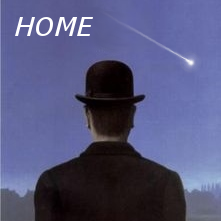
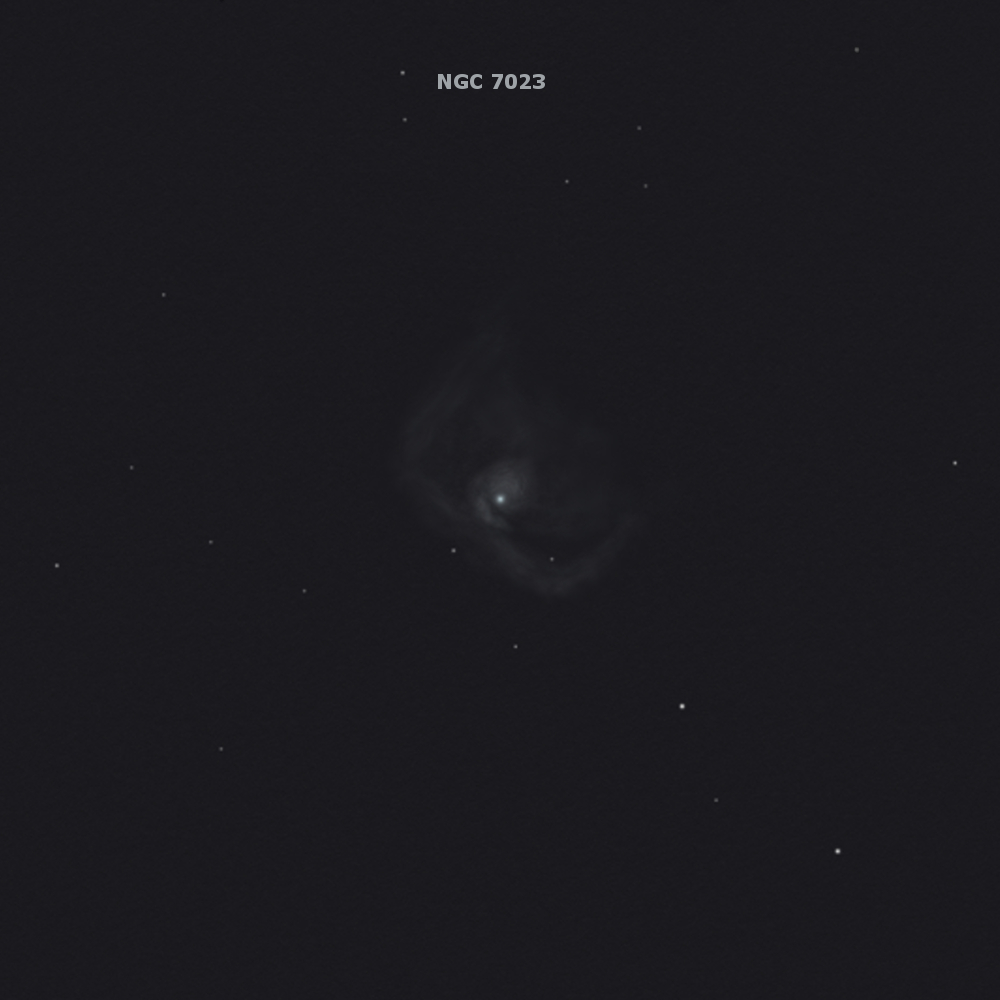
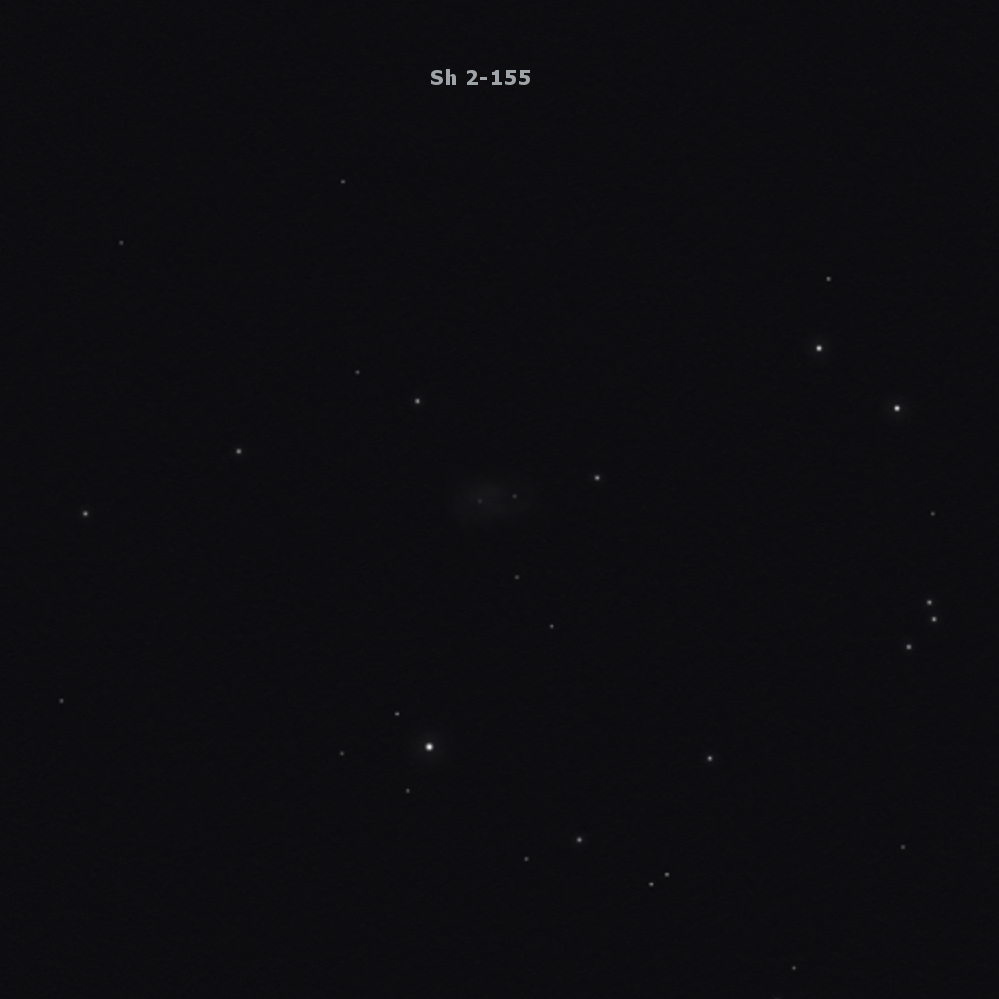
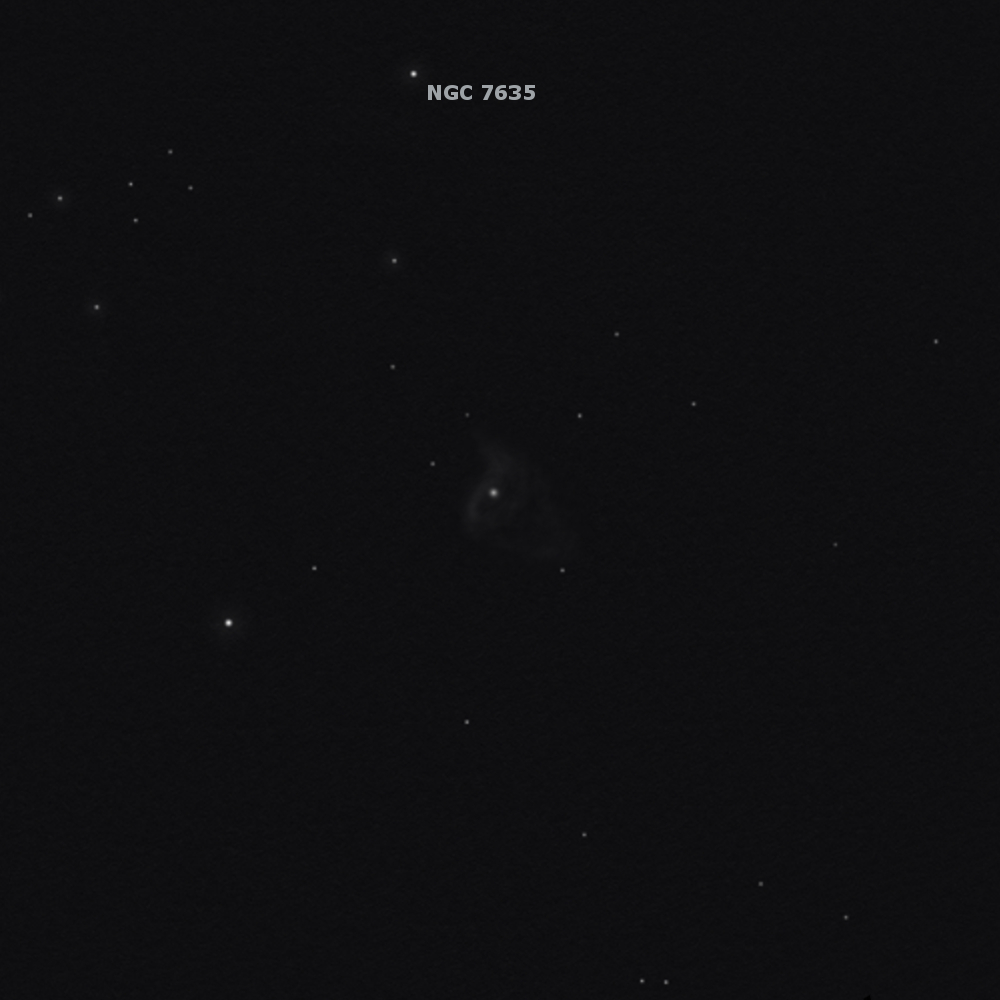
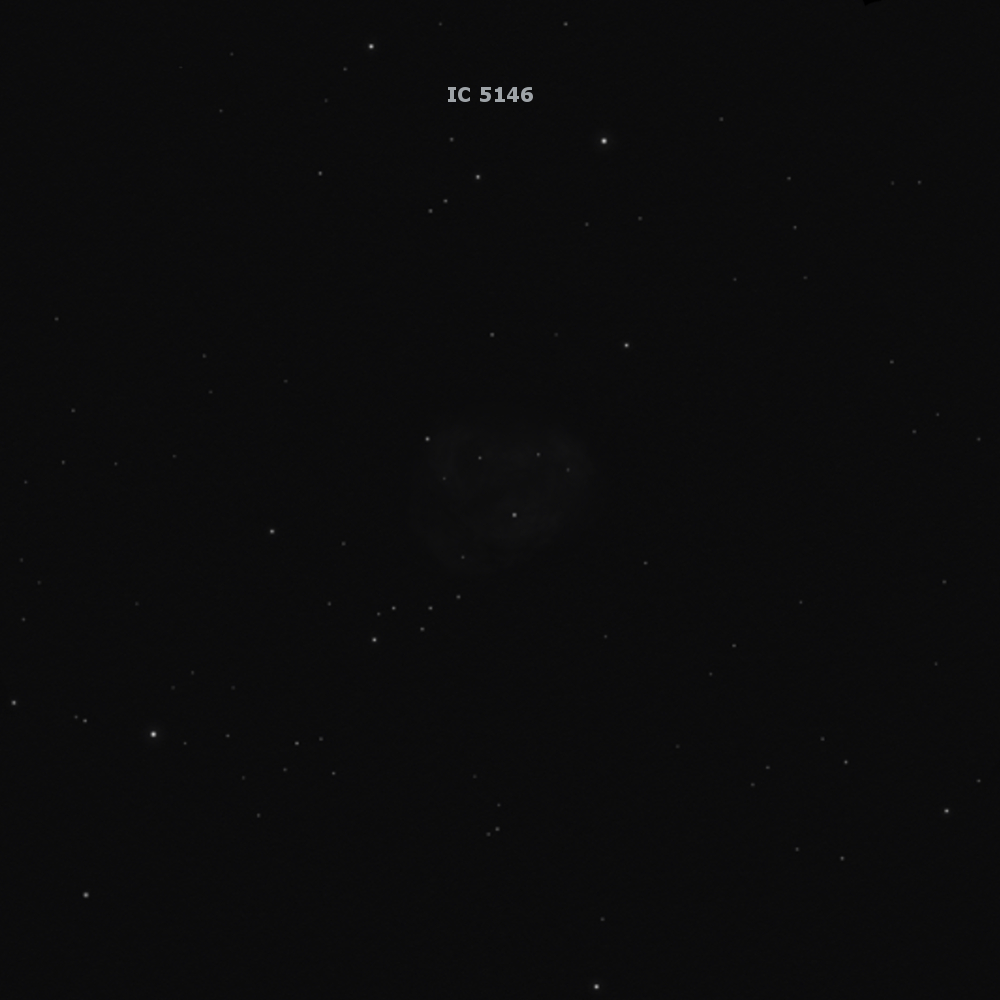
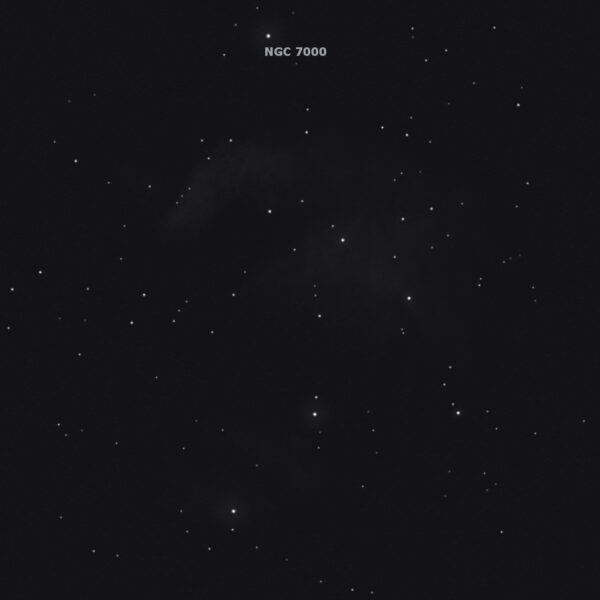
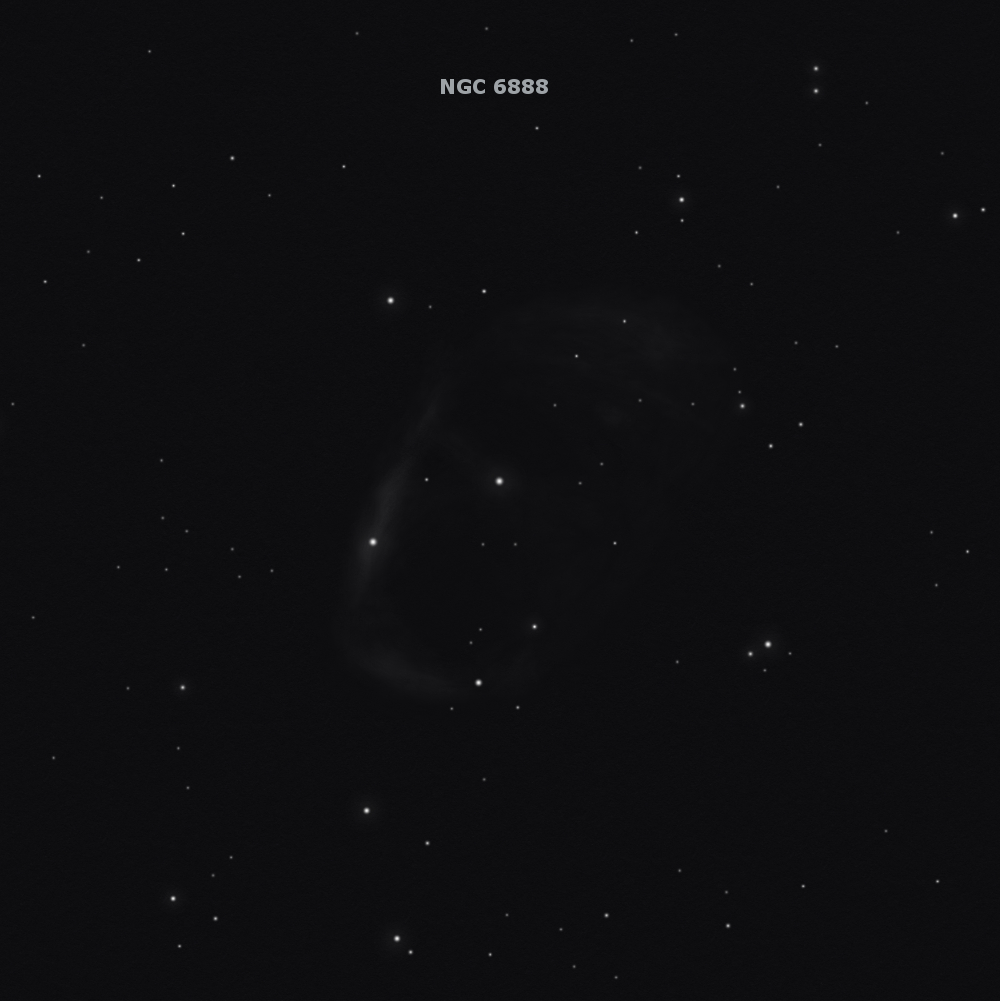
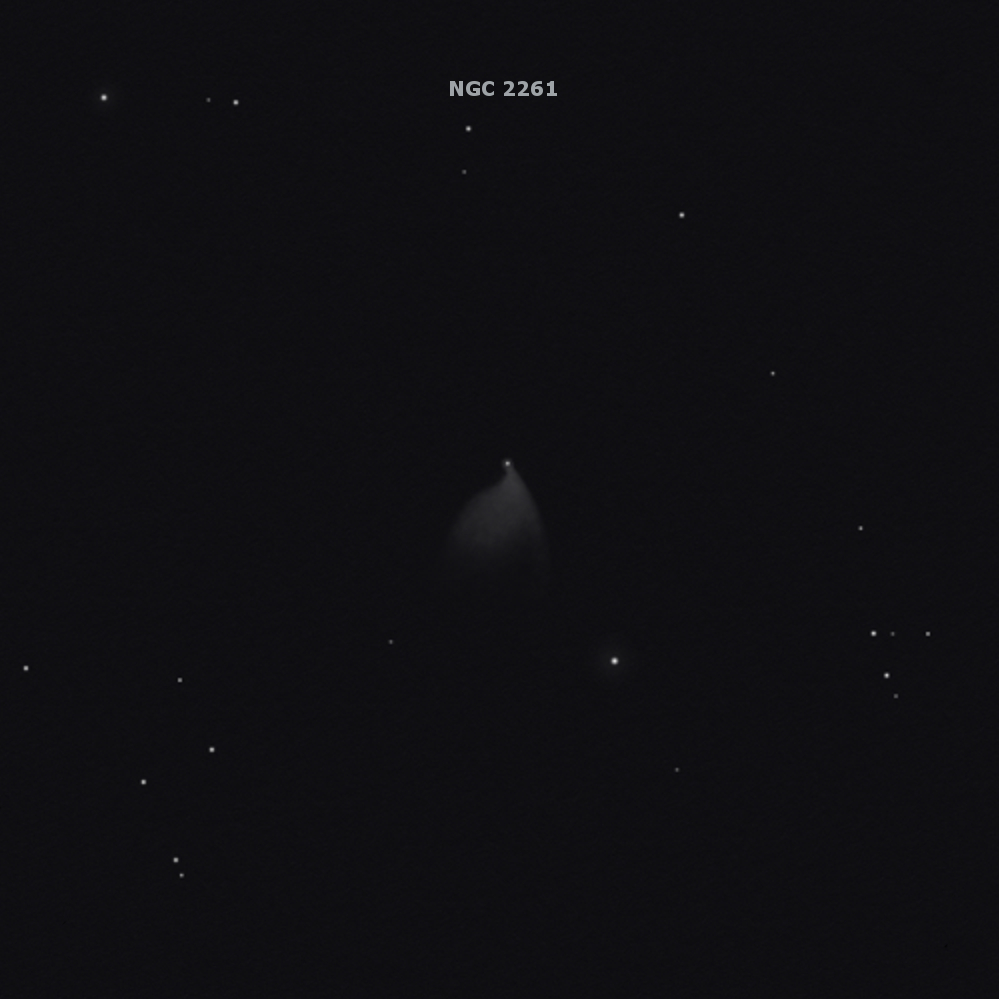

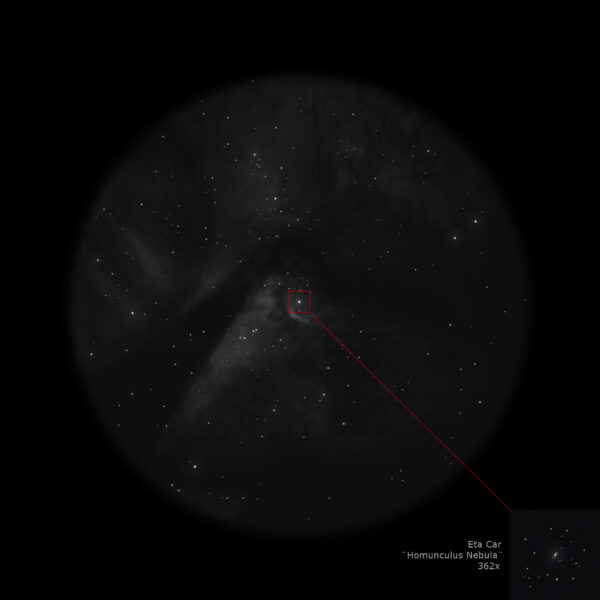
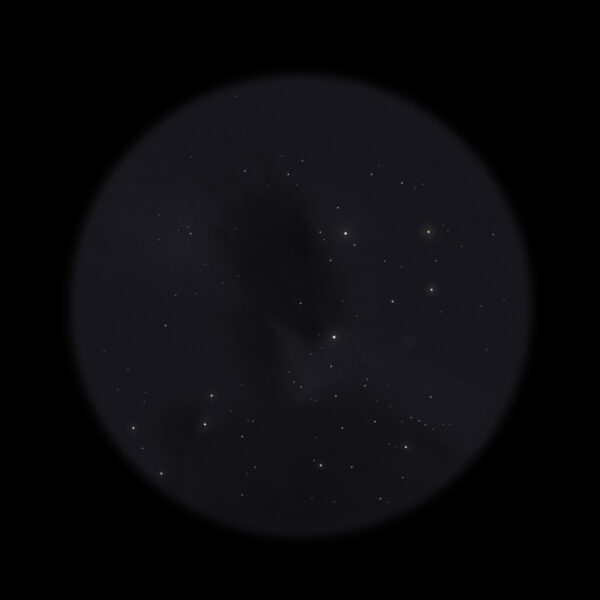
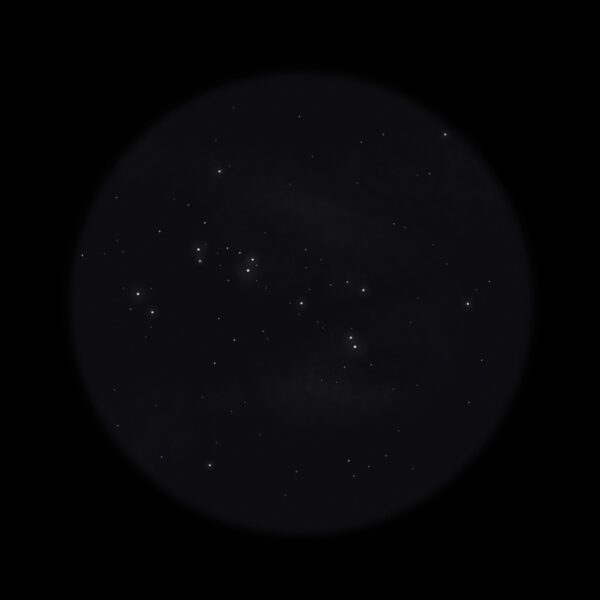
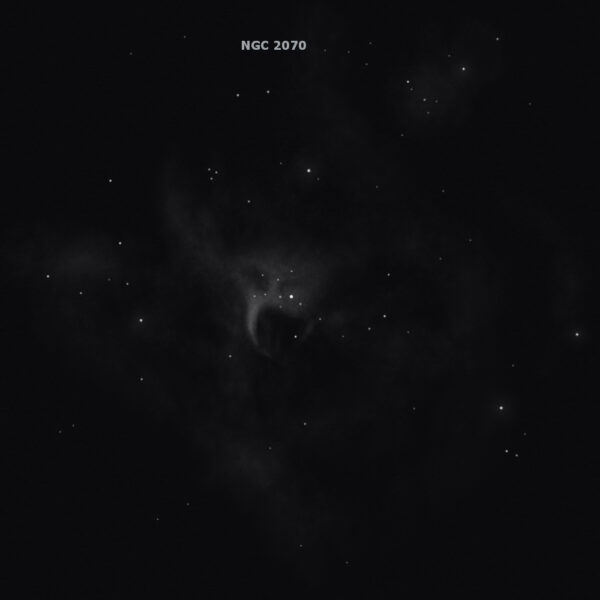
No Comments